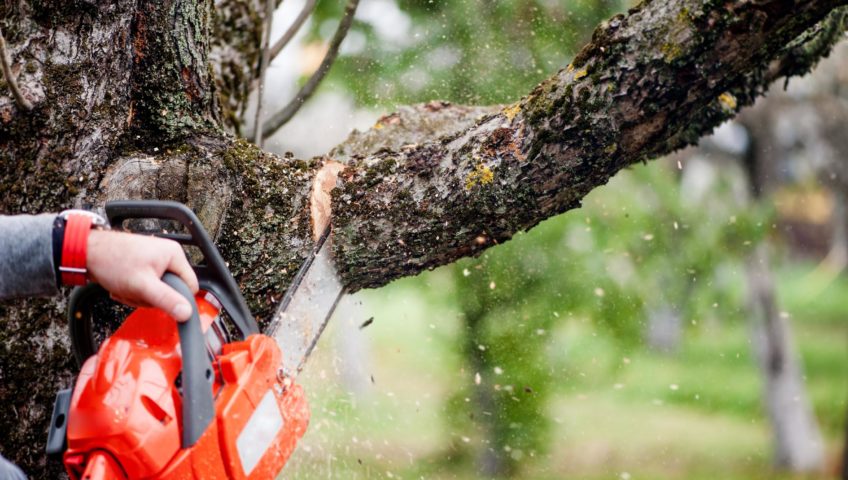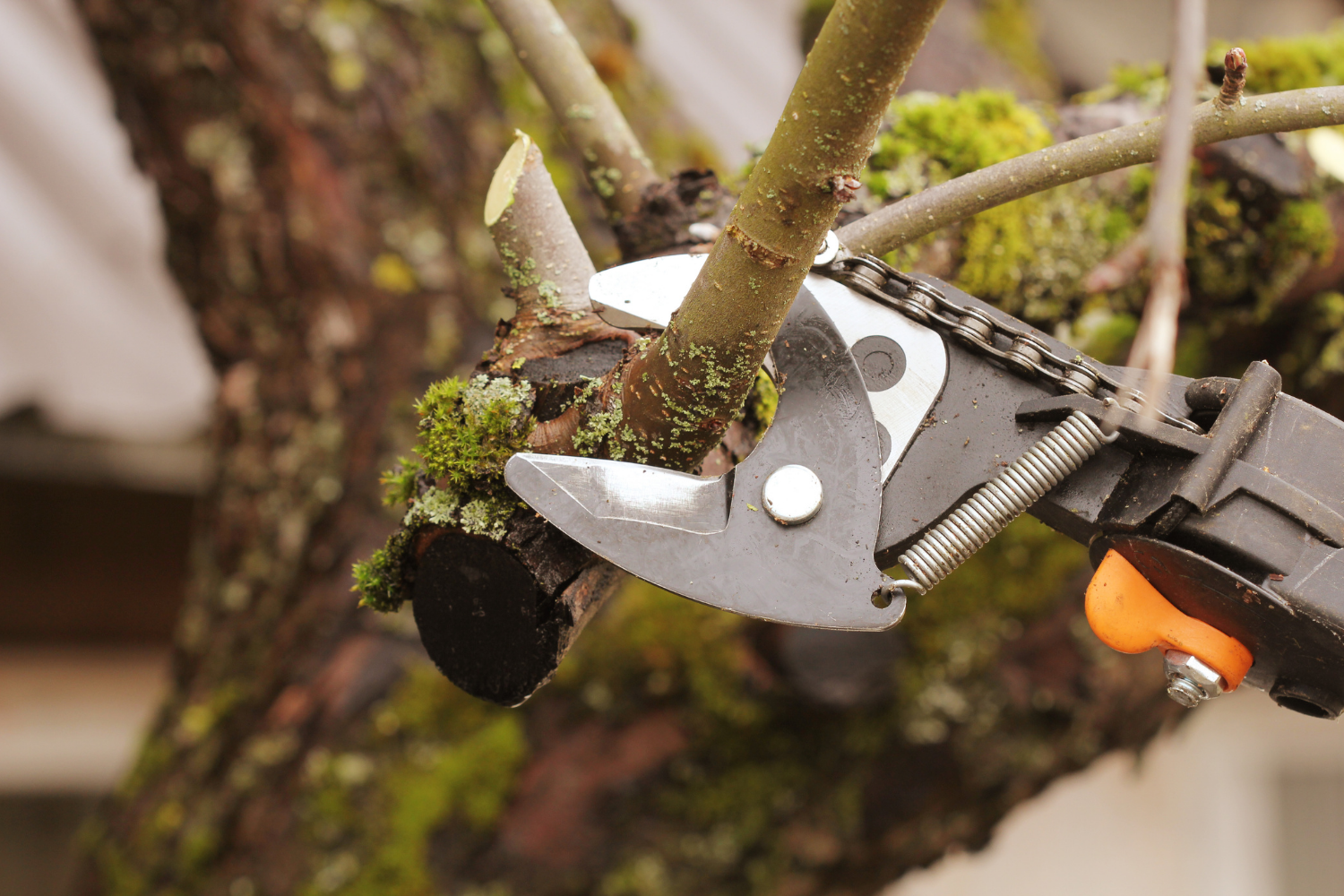Important Tree Cutting Solutions for a Lush Landscape
Maintaining a clean landscape needs greater than simply regular watering and feeding; it calls for a keen understanding of the essential role tree trimming plays in fostering a growing exterior setting. As trees grow, their branches can end up being disordered, blocking sunshine, restraining air flow, and possibly bring about disease. Nonetheless, the art of tree trimming entails more than simply the act of reducing limbs. By checking out the necessary devices, strategies, and timing factors to consider related to reliable tree cutting, a verdant and flourishing landscape can be available.
Value of Tree Trimming

Moreover, normal tree cutting is vital for ensuring the safety and security of individuals and residential property bordering the tree - Tree Services near me. Thick branches can present a significant danger, especially throughout storms or high winds, leading to potential residential property damage or accident. Trimming aids reduce these risks by decreasing the probability of branches falling suddenly
In addition, tree trimming plays an essential role in preserving the structural honesty of trees. By forming the tree and advertising correct development patterns, cutting can prevent branches from expanding also close together or crossing, which can result in weak accessory points and potential damage. Overall, regular tree trimming is an essential practice that adds to the long life and well-being of trees in any kind of environment.

Devices for Efficient Cutting
To achieve exact and efficient tree trimming, using the appropriate tools is vital for making sure the safety and wellness of the trees. Pruning shears are optimal for trimming little branches and twigs with precision, promoting the tree's development and aesthetics.
In enhancement to reducing tools, having a strong ladder is critical for getting to higher branches safely. A secure, sturdy ladder guarantees that the trimmer can access different parts of the tree without the risk of falling.

Finest Practices for Trimming
Making sure the correct choice and utilization of the aforementioned cutting tools and equipment is basic in implementing ideal practices for pruning trees effectively and securely - Tree Trimming. Nonetheless, beyond having the right tools, understanding exactly how to trim appropriately is crucial. Firstly, always start by removing dead, diseased, or damaged branches to promote overall tree health and wellness. When making cuts, bear in mind the three-cut method for larger branches to stop bark removing and damages. Begin with an undercut, complied with by a top cut to remove the branch, and do with a final cut to the branch collar. Additionally, avoid pruning throughout the active development periods of springtime and summertime to stop stressing the tree. Rather, decide for pruning throughout the inactive season to decrease the effect on the tree. Furthermore, never eliminate greater than 25% of the tree's cover in a single pruning session to stop shock and advertise healthy and balanced regrowth. By following these finest practices, you can ensure your trees stay lively and properly maintained.
Timing and Regularity Tips
When intending tree cutting timetables, consider the optimum timing and regularity for maintaining tree wellness and appearance. The timing of tree trimming can vary relying on the species of tree and the desired result. Generally, it is best to trim deciduous trees during their inactive period in late winter season to very early springtime. This timing helps advertise new development once the tree enters its energetic development stage in the springtime. For flowering trees, it is suggested to trim them immediately after they finish blooming to prevent removing next period's blossom buds.
Regularity of tree cutting is additionally important. Normal upkeep trimming, such as getting rid of diseased or dead branches, can be done each year to make sure the tree's wellness. However, more comprehensive pruning for shaping or size control may only be required every 3-5 years. Over-pruning can emphasize the tree and impact its general development, so it is important to strike a balance between keeping the tree's health and attaining the preferred visual appearance. By complying with these timing and frequency ideas, you can assist ensure a lavish and vivid landscape year-round.
Dealing With Infected Branches
Addressing diseased branches is a critical element of tree upkeep and wellness administration. Unhealthy branches not only endanger the aesthetic charm of a tree however likewise present a threat to the overall wellness of the tree and bordering plant life. When taking care of unhealthy branches, it is important to promptly address the issue and recognize to avoid the spread of disease and potential damages to the tree.
One reliable approach for managing infected branches is with pruning. By carefully inspecting the tree and identifying branches revealing indicators of disease, such as discoloration, unusual growths, or bug problems, arborists can purposefully trim damaged branches to stop the illness from spreading out even more. It is crucial to use proper pruning techniques to guarantee the tree's long-lasting wellness and vigor.
Additionally, it is necessary to throw away trimmed unhealthy branches appropriately to avoid the spread of virus. Burning or dealing with the branches at a neighborhood land fill can help stop the illness from impacting other trees around. Routine surveillance and aggressive administration of infected branches are crucial to maintaining a healthy and balanced and rich landscape.
Conclusion
In final thought, tree cutting is crucial for maintaining a rich and healthy landscape. Routine tree cutting will help promote development, protect against palm tree trimming illness, and boost the beauty of your outdoor environment.
Normal tree trimming is essential for keeping the wellness, visual appeals, and safety of trees in both domestic and industrial settings. By removing these damaged parts, the tree can designate more power to healthy and balanced branches and brand-new development, resulting in a more powerful and more dynamic tree.
To accomplish effective and exact tree cutting, using the suitable tools is vital for guaranteeing the safety and health of the trees.When intending tree trimming timetables, consider the optimal timing and frequency for keeping tree health and appearance. Unhealthy branches not only endanger the aesthetic charm of a tree but likewise pose a risk to the general health of the tree and surrounding plants.